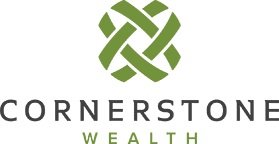Concentrated Stock Positions
Introduction
As a trusted financial advisor at Cornerstone Wealth, our primary goal is to help clients maximize their wealth while managing risks. This white paper delves into the realm of concentrated stock and explores various strategies to optimize wealth creation and preservation. We will focus on the implementation of covered call or options strategies, discuss tax-efficient approaches such as AIA/Vanguard Tax Efficient and Capital Gains Budgeting, explore the Northcoast Options Strategy, delve into Exchange Funds, evaluate Stock Protection Trusts, and examine the potential benefits of Donor-Advised Funds (DAF) and Charitable Remainder Annuity Trusts (CRATs).
Concentrated Stock: An Overview
Concentrated stock refers to a significant holding of an individual stock within an investment portfolio. While such concentrated positions can potentially yield substantial returns, they also pose considerable risks due to the lack of diversification. Managing concentrated stock requires careful planning to balance the potential upside with downside protection. This white paper examines several strategies designed to address the unique challenges of concentrated stock holdings.
Covered Call or Options Strategy
Understanding Covered Call Strategy
The covered call strategy is a popular options strategy that involves selling call options on an underlying stock position held in the portfolio. By doing so, investors generate income through the premiums received from selling the call options while potentially benefiting from limited upside participation if the stock appreciates.
Benefits and Risks
The covered call strategy offers several advantages, including income generation, potential risk reduction, and enhanced returns in sideways or slightly bullish markets. However, it's crucial to understand the potential risks involved, such as missed upside potential if the stock experiences significant price appreciation.
Implementation and Execution
Implementing a covered call strategy requires selecting the appropriate strike price and expiration date for the call options. The strategy's execution involves monitoring the market conditions, managing the call options, and potentially rolling the options forward to adapt to changing market dynamics.
Tax Implications
It is essential to consider the tax implications of covered call strategies, including potential capital gains tax if the underlying stock is called away. Careful tax planning and coordination with other investment strategies can help optimize the tax efficiency of this approach.
AIA/Vanguard Tax Efficient and Capital Gains Budget
Overview of AIA and Vanguard
The AIA/Vanguard Tax Efficient and Capital Gains Budgeting strategies aim to optimize tax efficiency while managing concentrated stock positions. AIA (Accumulate, Isolate, Allocate) and Vanguard are two leading providers of tax-efficient investment solutions.
Tax Efficiency in Concentrated Stock
These strategies focus on managing capital gains by utilizing various tax-efficient investment vehicles and techniques, such as tax-managed funds, tax-loss harvesting, and asset location optimization. By strategically planning investment transactions, investors can minimize the tax burden associated with concentrated stock holdings.
Capital Gains Budgeting Strategies
Capital gains budgeting involves carefully planning the timing of stock sales to optimize tax liability. By spreading the realization of capital gains over multiple years, investors can potentially reduce their overall tax liability and increase their after-tax returns.
Northcoast Options Strategy
Introduction to Northcoast Options Strategy
The Northcoast Options Strategy is an options-based approach that aims to manage concentrated stock risk while maintaining upside potential. This strategy utilizes a dynamic collar approach, involving the purchase of protective put options and the sale of call options.
Advantages and Disadvantages
The Northcoast Options Strategy offers downside protection against significant stock price declines while allowing for participation in moderate price appreciation. However, it is important to recognize the potential limitations, such as limited upside potential and potential costs associated with implementing the strategy.
Implementation Considerations
Implementing the Northcoast Options Strategy involves selecting the appropriate strike prices and expiration dates for the options, continuously monitoring the position, and adjusting the options as market conditions change.
Risk Management
Managing risk is paramount in the Northcoast Options Strategy. Regular assessment of the position, monitoring market trends, and adjusting the options to align with the investor's risk tolerance and financial goals are essential components of effective risk management.
Exchange Fund
Understanding Exchange Funds
An Exchange Fund is a specialized investment vehicle that allows investors with concentrated stock positions to diversify without triggering immediate capital gains taxes. Exchange Funds pool together the shares of various investors and exchange them for a diversified portfolio of securities.
Benefits and Potential Drawbacks
Exchange Funds provide investors with immediate diversification while deferring capital gains taxes. This strategy can help manage concentrated stock risk, enhance portfolio liquidity, and potentially reduce overall tax liabilities. However, it is crucial to carefully evaluate the costs, liquidity limitations, and specific risks associated with Exchange Funds.
Eligibility and Process
Eligibility for Exchange Funds typically requires meeting specific criteria, including holding highly appreciated stock positions and meeting minimum investment thresholds. The process involves exchanging the concentrated stock for shares of the Exchange Fund and acquiring a diversified portfolio.
Tax Considerations
Exchange Funds offer tax deferral benefits, allowing investors to postpone capital gains taxes until they eventually sell their shares in the Exchange Fund. Understanding the tax implications and potential limitations of this strategy is crucial for making informed decisions.
Stock Protection Trust
Overview of Stock Protection Trusts
Stock Protection Trusts (SPTs) are irrevocable trusts designed to protect concentrated stock holdings from downside risk while providing potential estate planning and tax benefits. SPTs allow investors to retain voting rights and receive income generated by the trust assets.
Benefits and Limitations
Stock Protection Trusts offer benefits such as downside protection, potential asset diversification, and control over the trust assets. However, it is essential to consider the limitations, including potential costs, loss of direct ownership, and restrictions on selling the concentrated stock.
Establishment and Management
Establishing a Stock Protection Trust involves creating an irrevocable trust, transferring the concentrated stock to the trust, and selecting a trustee. Effective management requires ongoing oversight, compliance with trust provisions, and proactive decision-making.
Tax Implications
Stock Protection Trusts may provide potential tax advantages, including estate tax reduction, income tax planning, and charitable giving opportunities. Understanding the tax implications specific to the investor's situation is crucial when considering this strategy.
Donor-Advised Fund (DAF) and Charitable Remainder Annuity Trust (CRAT)
Utilizing DAFs for Charitable Giving
Donor-Advised Funds (DAFs) are charitable giving vehicles that offer flexibility, tax advantages, and the ability to support charitable causes. Investors can contribute concentrated stock to a DAF, potentially benefiting from an immediate tax deduction while continuing to recommend grants to eligible charities over time.
CRATs as a Wealth Transfer Strategy
Charitable Remainder Annuity Trusts (CRATs) are trust arrangements that provide a stream of income to the donor or beneficiaries for a specified period, after which the remaining assets are transferred to a charitable organization. By contributing concentrated stock to a CRAT, investors may receive a charitable deduction, income payments, and potential estate tax benefits.
Tax Advantages and Considerations
Both DAFs and CRATs offer tax advantages, including potential income tax deductions, potential elimination of capital gains tax on donated stock, and potential estate tax benefits. Understanding the specific tax rules and limitations surrounding these strategies is crucial for maximizing the benefits.
Conclusion
Concentrated stock presents unique challenges and opportunities for investors. By implementing strategies such as covered call or options strategies, AIA/Vanguard Tax Efficient and Capital Gains Budgeting, Northcoast Options Strategy, Exchange Funds, Stock Protection Trusts, and exploring charitable giving through DAFs and CRATs, investors can optimize their wealth creation and preservation while managing associated risks. As financial advisors at Cornerstone Wealth, we stand ready to assist clients in navigating the complexities of concentrated stock and implementing tailored strategies aligned with their financial goals.
This is for informational purposes only and does not serve as personal advice. Cornerstone Wealth is not associated with AIA, Vanguard, or Northcoast. Investment advisory services are offered through Cornerstone Wealth Group, LLC dba Cornerstone Wealth, an SEC-registered investment adviser.


